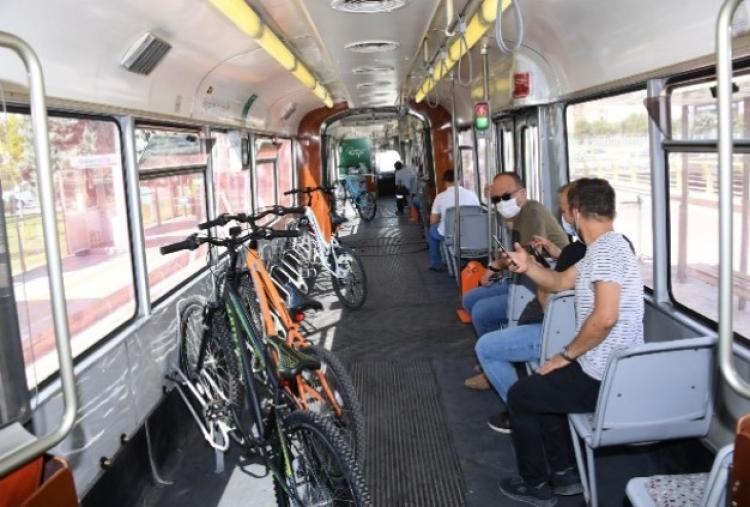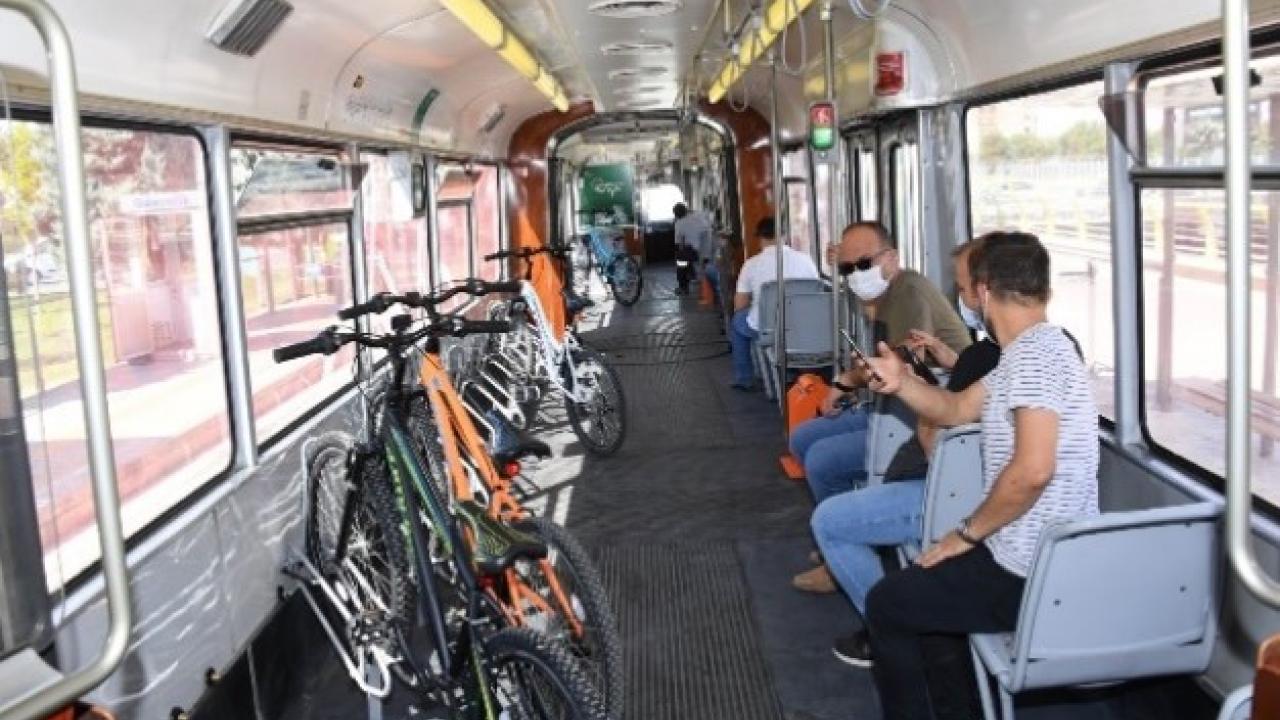Konya: First bicycle tram exclusively for bike users

The Challenge
- As it strives to be Turkey’s cycling hub, the central province of Konya, boasts a 550-kilometer (341.7-mile) network of bicycle lanes, one of the longest in the country.
- The province’s mayor, Uğur Ibrahim Altay, pledged to build an additional 84-kilometers of bicycle lanes in the next three years in the province.
- In order to encourage citizens also to use bicycles for long distance travels, intermodal transport options needs to be improved
- Taking the bicycle on public transport is challenging for passengers due to owercrowed tram lines and lacking space and equipment for bicycles on the carriages
The Solution
The city of Konya has converted an old tram into a “bicycle tram” on the Alaaddin Hill-Selçuk University tram line and allocated its use exclusively to bicycle users. To allow for an easier onboarding and more comfortable ride some features of the wagons have been adapted:
- A foldable hydraulic ramp for the steps, which will stand in a folded position when the doors are closed and will open and close synchronously with the door. One or two seconds after the door is opened, the hydraulic ramp will open from the tram floor to the station floor, allowing cyclists to easily get on the tram with their bicycles;
- The double seats in the tram were removed and 21 bicycle attachments were installed;
- To prevent the bikes form falling when the trains moves, a locking mechanism was developed by the municipal engineers, in which the bicycle was placed inside the front wheel and kept the bicycle stable;
Moreover, the tram schedule has been redesigned with the bicycle tram commencing. The bicycle tram does not stop at every station: 13 out of 33 stations integrated with bicycle lanes are determined as bicycle tram stations. Lastly, while making this determination, the number of people using the stations was taken into account. Stations with low density are especially chosen to avoid overcrowding on the station platforms.

Making an impact
- Significant awareness regarding the use of bicycles in Turkey has been raised by the bicycle tram in Konya.
- During the first week of its implementation, the bicycle tram made 7 trips a day and carried an average of 100 cyclists per day. (It is expected that this number would have been much higher if high schools and universities were not closed due to COVID-19)

Lessons learnt
The biggest obstacle to the transformation of an old Duewag tram into a bicycle tram was the presence of steps on the tram doors. Considering older cyclists, a practical solution had to be found to facilitate getting on the tram.







